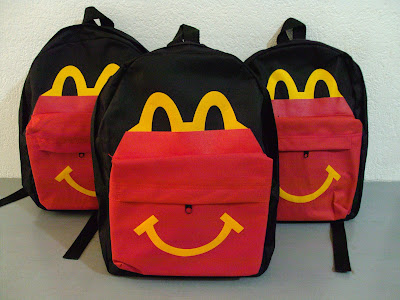Heaps of Garbage Dot Streets of Metro Manila following the New Year Revelry (Watch group says: “Stop trashing our communities”)
Divisoria, Manila City
Divisoria, Manila City
Divisoria, Manila City
Divisoria, Manila City
Balintawak, Quezon City
Balintawak, Quezon City
Monumento, Caloocan City
Monumento, Caloocan City
Public Market, Marikina City
Public Market, Marikina City
Residents of Metro Manila for the nth time welcomed the
New Year with piles of mixed garbage all around the bustling metropolis.
The EcoWaste Coalition noted the unsightly and stinking
trash on the streets, sidewalks, parks and market areas following the bright
and boisterous countdown to 2019 and the customary media noche feasts.
“It’s really great to see families happily celebrating
the New Year. But what makes this
beautiful tradition ugly is our penchant to consume and throw a lot of things
as can be seen from the overflowing bins to the garbage piles dotting our
neighborhoods following the revelry,” said Daniel Alejandre, Zero Waste
Campaigner, EcoWaste Coalition.
“Many of our communities, especially in thickly populated
areas, are drowning in post-revelry garbage on the first day of January, which,
incidentally, is observed as ‘Zero Waste Month.’ In some places, it may take a few days for
haulers to clear streets of mini-dumps.
We need to stop trashing our communities,” he said.
Based on the monitoring conducted this morning by the
group’s Basura Patrollers, the streets surrounding bargain hubs and market
places were found to be filthiest with trash strewn in wide areas.
“We found mixed wastes dumped in our cities’ streets,
including food leftovers, product packaging, plastics and hazardous residuals
from firecrackers and fireworks,” Alejandre said.
As expected, the group witnessed widespread dumping at
the Balintawak market in Quezon City, along Recto Avenue and adjacent streets
in Divisoria, Manila City, at Monumento, Caloocan City, and around the Marikina
City Public Market.
Information from the Metro Manila Development Authority
(MMDA) shows Quezon City as number 1 in garbage production in the metropolis
generating 3,610 tons per day, followed by Manila City and Caloocan City at
1,175 and 913 tons per day, respectively.
Marikina City ranked 6th at 460 tons per day after Paranaque City (635
tons per day) and Makati City (474 tons per day). Metro Manila, according to MMDA, produces
9,872 tons of garbage everyday, constituting close to 25% of the national daily
waste production at 40,000 tons.
According to the EcoWaste Coalition, crass consumerism
and poor waste segregation contribute to the huge amounts of garbage requiring
disposal after the holidays.
"While we demand that manufacturers embrace clean
production and extended producer responsibility, we as consumers need to
consume responsibly, choose products in least packaging, and ditch single-use
plastics altogether. We should also
properly sort our discards to facilitate their reuse, recycling or composting,”
Alejandre pointed out.
As the “Zero Waste Month” is commemorated, the EcoWaste
Coalition renewed its appeal to all waste generators --- from households,
institutions to businesses and industries --- to commit to proven waste
prevention and reduction practices as embodied in Republic Act 9003, or the
Ecological Solid Waste Management Act.
“By actively enforcing the provisions of R.A. 9003, we
can dramatically cut the volume of Metro Manila’s garbage that are disposed of
at landfills located in Navotas City, and in Rodriguez and San Mateo, Rizal, as
well as avoid waste materials from spilling into the seas and oceans,”
Alejandre said.
R.A. 9003 requires "the formulation and adoption of
the best environmental practices in ecological waste management excluding
incineration," such as waste separation at source, reuse, recycling and
composting.
-end-
Reference:
http://mmda.gov.ph/images/Home/Infomercial-2018.pdf















Comments